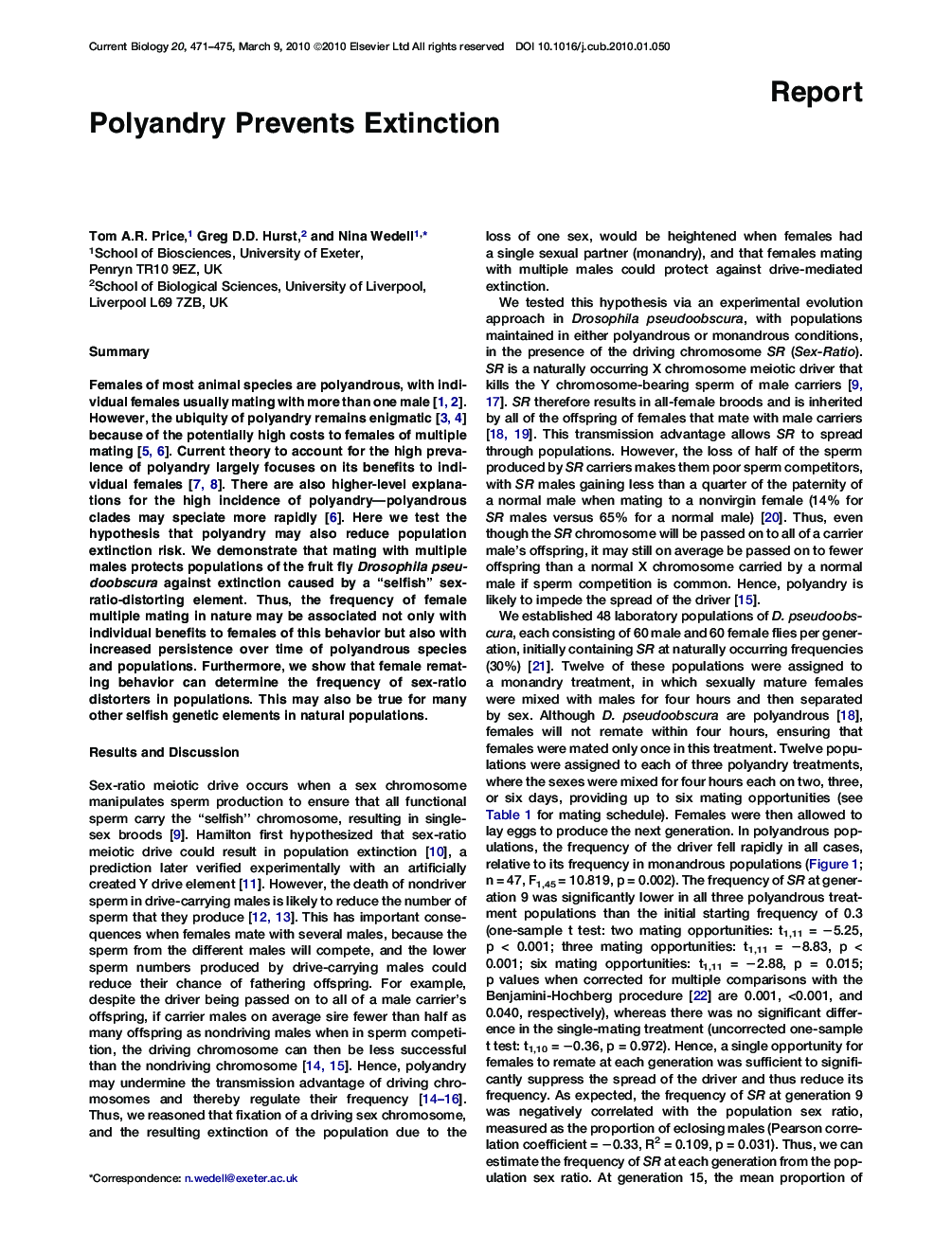| Article ID | Journal | Published Year | Pages | File Type |
|---|---|---|---|---|
| 2043159 | Current Biology | 2010 | 5 Pages |
SummaryFemales of most animal species are polyandrous, with individual females usually mating with more than one male [1 and 2]. However, the ubiquity of polyandry remains enigmatic [3 and 4] because of the potentially high costs to females of multiple mating [5 and 6]. Current theory to account for the high prevalence of polyandry largely focuses on its benefits to individual females [7 and 8]. There are also higher-level explanations for the high incidence of polyandry—polyandrous clades may speciate more rapidly [6]. Here we test the hypothesis that polyandry may also reduce population extinction risk. We demonstrate that mating with multiple males protects populations of the fruit fly Drosophila pseudoobscura against extinction caused by a “selfish” sex-ratio-distorting element. Thus, the frequency of female multiple mating in nature may be associated not only with individual benefits to females of this behavior but also with increased persistence over time of polyandrous species and populations. Furthermore, we show that female remating behavior can determine the frequency of sex-ratio distorters in populations. This may also be true for many other selfish genetic elements in natural populations.
► Polyandry can regulate the frequency of a sex-ratio-distorting meiotic driver ► This can prevent extinction in populations and potentially species ► Reduced extinction risk may help explain why polyandry is so widespread in nature
